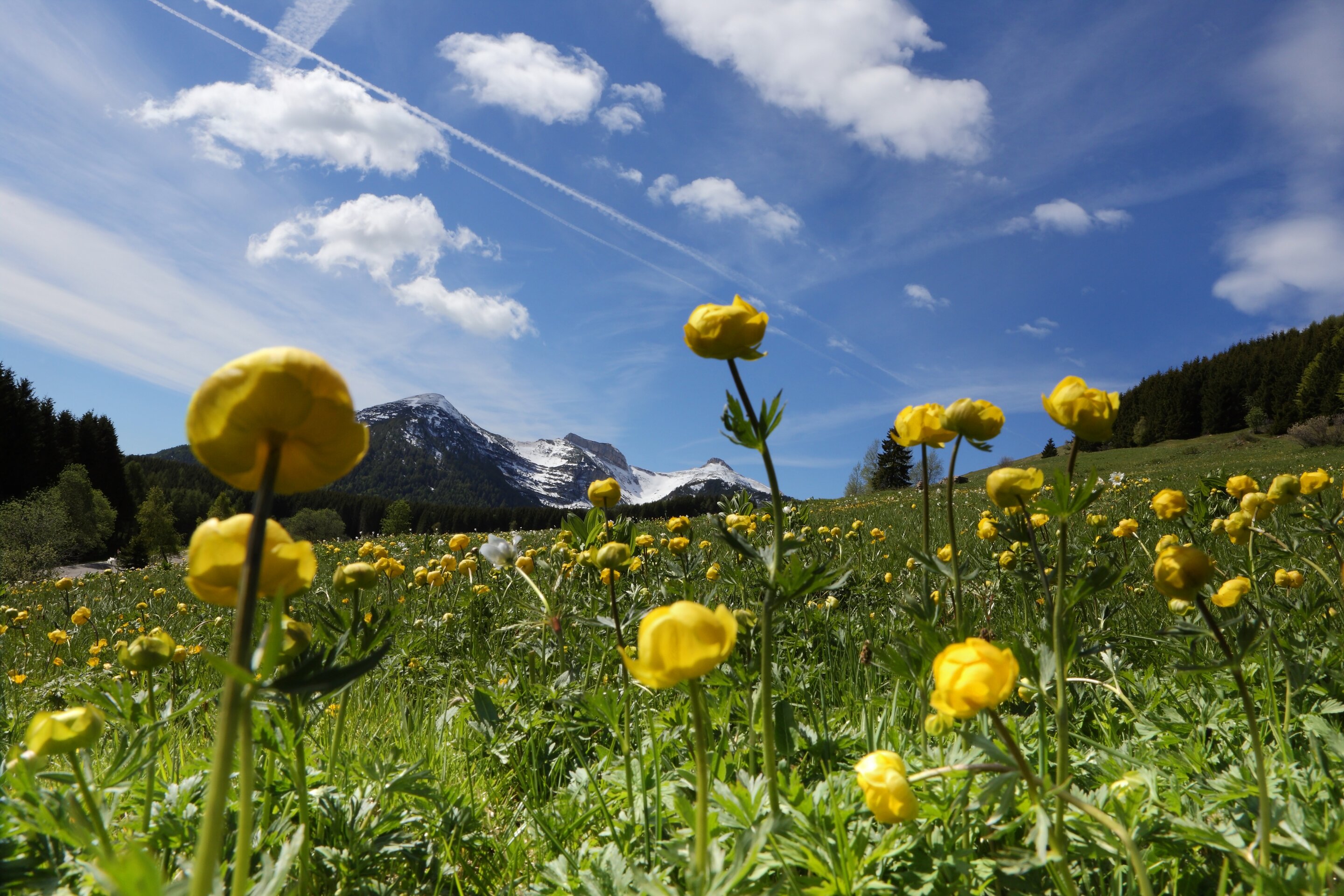The warmest temperatures recorded in recent years are changing weather patterns and disrupting the natural equilibrium, posing many risks for humans and for all other forms of life on Earth.
Impact on hydro-resources
The effects of climate change predicted for the thermo-pluviometric regime will alter the availability of water resources, changing in particular the extent and seasonality of runoff in surface watercourses. It will therefore be necessary to carefully plan water resource management, as the deficit could be greater in summer, when there is greater competition between different uses: drinking water for a growing population due to tourist flows, water storage in reservoirs for hydroelectric power production, and increased irrigation needs for agriculture. A study carried out on the basins of the Noce river and the Brenta river in the area of the OrientGate project (Autonomous Province of Trento, 2014) to evaluate the combined effect of future climate changes and the over-use of hydroelectric power on the water availability has highlighted some important trends. In the future scenarios taken into account, for the period 2021-2050, we can expect, in both lakes, a slight annual reduction in water volume with visible seasonal differences and varying behaviours between streams at high altitude and the flow of water in the final parts of the basins. In the mid-term, the most problematic season seems to be the summer, especially for reservoirs located at lower altitudes, with significant reductions in water levels, while in winter, increases in derivable volumes are expected. Seasonal variations and variations based on hydrological regime type may also be observed in minimum flow regimes. In winter, the likely increase in water availability will lead to an increase in the number of days in which flows exceed the minimum vital flow¹0 (DMV), as is also expected in spring for the higher altitude reservoirs in Val di Sole. In summer and spring, however, in the reservoirs at lower altitudes and for those of the Brenta River, there is likely to be a decrease in the number of days in which the river flow exceeds the MVR, with a consequent prolongation of low-flow periods and reduced hydrological sustainability of the current MVR.
Impacts on inland water ecosystems
Inland water ecosystems are important reservoirs of biodiversity, whose ecological status is subject to considerable anthropogenic pressures causing the loss of biological components and habitats and a general deterioration of natural conditions. Therefore, climate change affects ecosystems that are already partially compromised and highly vulnerable, and can amplify effects such as the loss of species and ecosystem services, biological invasions and the deterioration of water quality, also associated with the release of past pollutants as glaciers melt.
Impact on ecosystems and plant biodiversity
Alpine areas are amongst the areas at highest risk of loss of biodiversity and have already been largely affected. Climate change affects the physiology, life cycle, disease resistance and geographical distribution of species, the composition of terrestrial ecological communities and interspecific interactions. In Trentino, too, certain effects are likely to accelerate in the coming decades, such as: the raising of the tree line and changes in forest composition; changes in the structure, distribution, and productivity of different habitats, with consequences for both vertebrate and invertebrate fauna, soil and above-ground, community structure, population distribution, genetic diversity, behaviour, reproduction, and intestinal flora; changes in phenological cycles, with many plants flowering earlier and the growing season starting prematurely; the rise in altitude of plant species that are more suited to cold climates, which tend to find themselves in habitats that are no longer optimal, leading to a decline in population or even extinction; the increased spread of plant diseases due to the water or heat stress experienced by forest plants as a result of extreme weather events; the spread of alien and invasive species.
Impact on fauna
Many effects have been observed on alpine fauna. Periods of activity and reproduction (as well as reproductive success) of many species of birds, amphibians and arthropods have changed. For example, it is now common for many species of migratory birds to arrive earlier, for many amphibians to reproduce earlier, and for many insects, particularly pollinators, to reach adulthood earlier. The distribution areas and local density (of mammals, birds and arthropods) have changed. Several mountain animal species have moved to higher altitudes, resulting in a reduction and fragmentation of their preferred range, and changes in population distribution and genetic diversity (with impacts on their adaptive capacity and ability to combat pathogens). Local extinctions of some insects and drastic reductions in populations have been demonstrated. Morphological changes have also been observed in body weight, fertility, etc. There has been an increase in new invasive alien species, including pests and pathogens, which contribute to an increased risk of extinction of native populations and species. The structure of habitats is also changing, as is the availability and accessibility of food, affecting population dynamics.
Find out more about the risks linked to climate change Download the 2024 Brochure
Climate adaptation: a strategic response
Climate adaptation is a strategic response to ongoing climate change, aimed at limiting its harmful effects and capitalising on any opportunities. At the heart of this approach is resilience, i.e. the ability of a system – be it a natural ecosystem, a human community or a business organisation – to withstand, adapt to and recover from stressful events such as floods, droughts or extreme temperatures. Climate adaptation can take many forms: from introducing more sustainable agricultural practices to creating climate-resilient infrastructure, to reformulating business models to take into account the impacts of climate change.
In a global context that is increasingly sensitive to environmental issues, the combination of climate adaptation and risk reduction is a fundamental pillar of corporate and non-corporate sustainability strategies. Companies focused on the green economy are turning to innovative technologies to tackle climate change, not only with the aim of reducing the environmental impact of their operations, but also to mitigate the potential economic and operational risks that such changes may entail.
There are many climate adaptation strategies, including:
- Agricultural adaptation: growing food sustainably
- Infrastructure adaptation: building to withstand climate change
- Water adaptation: managing water scarcity in a changing climate
- Rural adaptation: supporting agriculture and rural activities in climate-vulnerable areas
- Building resilient communities: studying the climatic, geographical and social characteristics of urban areas and involving the local community in decision-making processes
- Sustainable architecture: design and construction choices that serve the environment
- From the global to the individual level: responsibility lies with everyone, every small gesture counts.

